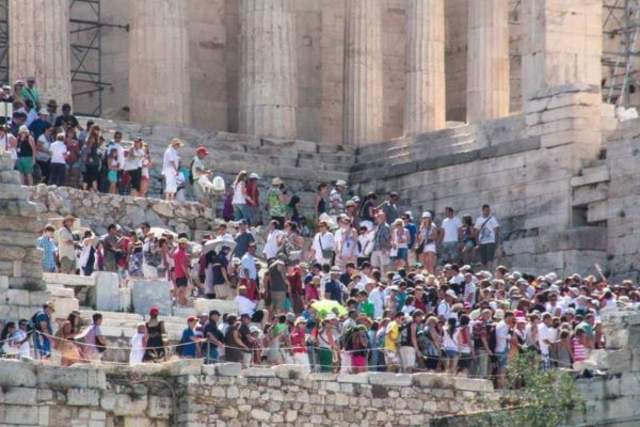The easing of pandemic restrictions across the world has seen a release of pent-up demand for travel and tourism. And yet, the sharp, sudden (and even joyful) revival of the sector is viewed in many quarters — even among those who rely on it for their livelihoods — as something of a mixed bag: the intensity of the post-Covid tourism rebound is an economic boon, but it’s also acknowledged as something that has the potential to wreak havoc on a destination. Many places around the globe were grappling with the phenomenon of overtourism prior to the pandemic, but now — with the world eagerly on the go again — it would be fair to say that, this time around, it’s not so much a return to ‘business as usual’ so much as revisiting an old problem in a time of renewed urgency.
Why Does Overtourism Matter Again Now?
Overtourism is about more than simply too many visitors in any given destination at a particular point in time; rather, as The World Tourism Organization (UNWTO) clarifies, overtourism is more about a destination’s given capacity — or a lack thereof — to effectively manage these visitors. This inability to cope with inbound tourists can make for any number of negative outcomes for a destination — ranging from dangerous physical overcrowding in certain areas within a place, to stress and strain on local infrastructure, to long-lasting and even irreparable damage to the environment and/or sites of cultural importance.
The issues faced this year by the Greek capital of Athens are a prime example of post-pandemic overtourism. As of last month, visitor figures to the country — which has a population of about ten million — were set to near 30 million. Athens is of course the main port of entry for international visitors into the country, with many pausing here to see one of the city’s main sites, the Acropolis. During the peak summer season, it was reported that up to 16,000 people per day visited the site. While these inbound visitors bring with them an influx of cash, Greek authorities and local residents have voiced their concerns on how best to preserve the Acropolis for future generations while allowing the visitors of today to enjoy the site as one of the world’s most famous monuments. With concern over climate change looming ever larger — and with tourism playing a key part in the UN’s 2030 Agenda for Sustainable Development — now is the time for destinations to once again consider what can be done to combat overtourism.

What are Destinations Doing to Mitigate Overtourism?
For destinations, there’s a fine balance to be struck between welcoming visitors and taking steps to prevent the substantial dangers of overtourism. Far from the wholesale closure of a site or place to the general public, the real-world responses of many individual places to the threats they face have been implemented with thought and care.
Venice is one of the most well-known examples of overtourism and during the last year, the Italian city has taken measures to try and protect its sites, its inhabitants, and its famous lagoon from irreversible damage. The city has not only banned cruise ships from docking at its port — a move that it hopes will preserve the biodiversity of its estuary — but, from 2023, it is set to introduce a daily tourist charge of up to €10, with all trips into the city to be booked in advance. Over in the south of France, the region's famous calanques — the steep-sided inlets that dot the Mediterranean coast near the city of Marseille — are popular spots for swimming and hiking with locals and tourists alike. One of the most visited inlets is at Sugiton, but during the region’s peak summer season, local authorities enforce a permit system to cap visitor numbers at 400 people per day to mitigate the impact of overtourism on Sugiton’s delicate local ecosystem.

In yet another example of a destination’s attempt to manage visitors more efficiently, the restrictions in place between June and September on Italy’s ever-popular Amalfi Coast involve offering visitors access to the area at set times based on their licence plate details. Slightly further afield, Amsterdam, Dubrovnik, Prague, Barcelona, Cornwall, and the Thai island of Koh Tao are all grappling with how best to protect their localities from overtourism. And while many destinations already implement some iteration of the measures recommended by the UNWTO — such as the adoption of off-peak promotions, the basic monitoring of visitor numbers, and highlighting the impact of tourism to visitors — the body’s comprehensive reply of 11 different strategies means that, when it comes to overtourism, no destination should ever again resign themselves to ‘business as usual’.

Images courtesy of:

